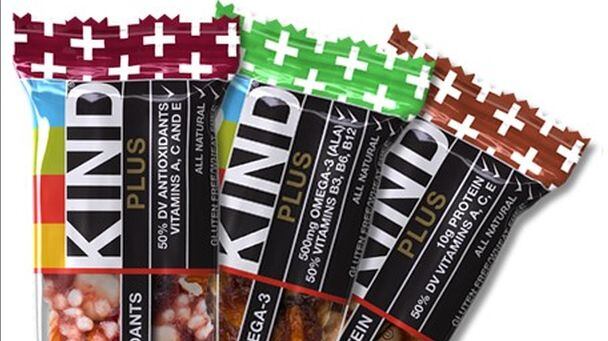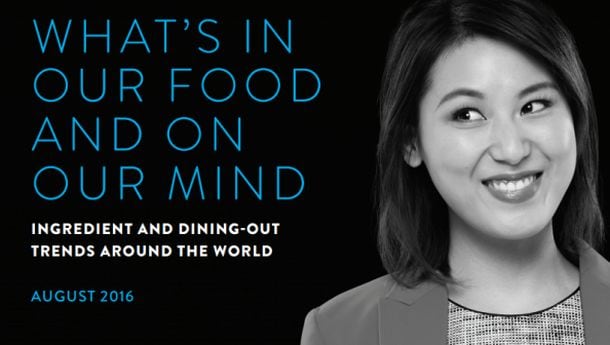The FDA’s ‘healthy’ probe follows a high-profile spat with snack bar maker KIND, which says rules requiring that ‘healthy’ foods must also meet the criteria for ‘low fat’ claims are outdated as they mean that products such as sugary cereals can be labeled as ‘healthy,’ while higher-fat nuts and avocados cannot.
After some soul searching, the FDA acknowledged KIND’s points, and recently unveiled plans to re-evaluate its conditions of use for 'healthy' nutrient content claims, and invited public comment on questions including:
- What types of food, if any, should be allowed to bear the term ‘healthy?’
- Should all food categories be subject to the same criteria?
- Is ‘healthy’ the best term to characterize foods that should be encouraged to build good dietary practices or patterns? What other words or terms might be more appropriate (eg. ‘nutritious’)?
- What nutrient criteria should be considered for the definition of the term ‘healthy?’
- What do consumers understand as ‘healthy’ in relation to food?
Down the rabbit hole… again
As with the public comments on ‘natural’ claims, what is immediately striking about the comments submitted to the FDA docket thus far (which are mostly from consumers) is how heavily they rely on words such as ‘chemicals,’ 'natural,' ‘artificial’ and ‘processed,’ which themselves are not clearly defined in law.
Healthy: Not just about nutrition?
The comments also reflect a shift in the way consumers think about ‘healthy’ from being narrowly focused on fat, sugar, calories or other nutrients, to more wide-ranging definitions referencing the absence of ‘artificial ingredients’ or GMOs, or how sustainable a product is, for example. Several commentators also say healthy means 'organic.'
As with ‘natural' label claims, a significant minority of respondents argue that food manufacturers should not be allowed to use the term ‘healthy’ on food labels at all, because it reflects an unscientific focus on individual foods rather than the overall diet (eg. A healthy diet can include the odd 'unhealthy' treat).
The deadline for submitting comments is January 26, 2017, but here’s a taste of some of the submissions thus far:
James Partner: As a professor of food marketing at St. Joseph's University in Philadelphia, I find this worthless effort to be a waste of time and taxpayer money. ‘Healthy’ refers to a consumer's diet... not the food. Food can be ‘nutritious,’ ‘wholesome,’ and even ‘natural.’ But food isn't healthy or unhealthy. Why is that so difficult to understand? ‘Part of a healthy diet...’ yes. ‘Healthy’ as a stand-alone descriptor of a specific food, no way.
Anon: ‘Healthy’ foods are foods that naturally occur in the world. For example, nuts, fruits, vegetables, etc. The less manipulation of it by human hands, in machines, the more healthy the product tends to be.
Becca Zoeller – ‘Healthy’ means: food grown without toxic chemicals and not genetically modified; no hydrogenated oils or trans fats; minimally processed; no artificial ingredients; no refined sugars; no refined grains; no high fructose; made without table salt, but rather a salt taken from nature such as sea salt or Himalayan pink crystal salt. In other words, healthy food includes: organic ingredients; whole foods; healthy fats; whole grains and seeds; grass fed animals and animal byproducts; free range animals and animal byproducts; products made with only one or two processes from the whole food form; and, chemical-free.
Jonathan Hardy: ‘Healthy’ food is food that is environmentally sustainable and beneficial plus biologically unharmful to the body's natural digestion…
Kelie Cichoski: Healthy should mean no chemicals, no preservatives that are not naturally occurring, no hormones, and no antibiotics.
Peter Hoffman: 'Healthy' should not be used as a marketing label at all. Such claims are always dubious and never allow for the fact that moderation in anything is important.
Anon: The word ‘healthy’ should not be used in any way to define, market, or identify food, as health is subjective in nature and should not be used to make generalizations.
George Inashvili: By far and away the most important definition of healthy is that it's true organic. Healthy is non-GMO… Healthy is elimination of sugar… Healthy is a mostly vegan, organic diet full of dark leafy greens, green teas, and plant protein.
Daniel Hardy: FDA regulated ‘healthy’ foods should contain greater than 95% by volume of whole food ingredients, and be a 'good source' of natural nutrients and vitamins (not required to be added back due to being lost during processing). They should not have excess amounts of added sugar ingredients (less than 2.5g by any name). The serving size should be a reasonable expected serving (example- no breakfast bar servings of half a bar).
Ruth Ranks: I am a Registered Dietitian Nutritionist specializing in nutrition education, and the treatment/prevention of obesity. I'd like to see the FDA eliminate the use of the term ‘healthy’ on all packaged foods. …. Much of our current labeling creates a false ‘healthy halo.’
Tami Hanke: I don't think anything with any kind of added sugar can be regarded as ‘healthy.’
Barry Popkin, University of North Carolina, Chapel Hill: We need to fit with both our US dietary guidelines and the WHO, which have set clear goals and guidelines… Food claims that focus on single nutrients mislead the public repeatedly… We must use a food group-based all-encompassing definition.
Read all the comments in the docket (deadline Jan 26, 2017).

Food labeling regulations currently mandate that the term ‘healthy’ can only be used as a nutrient content claim to describe foods that (among other things) contain 3g or less total fat and 1g or less of saturated fat per serving, with the exception of fish and meat.
However, in the wake of a spat with snack maker KIND, FDA now says that it will not enforce current regulatory requirements for products that use the term ‘healthy’ if they:
(1) Are not low in total fat, but have a fat profile makeup of predominantly mono and polyunsaturated fats; or
(2) Contain at least 10% of the Daily Value (DV) per reference amount customarily consumed (RACC) of potassium or vitamin D.
Read the new guidance on ‘healthy’ claims HERE.

